Are you considering a bathroom renovation or just need to replace your old shower? Shower inserts are an excellent option that combines style, convenience, and cost-effectiveness. In this extensive guide, we delve deep into understanding what shower inserts are, their types and benefits, how to install them, their cost, alternatives, where to buy them, and their investment potential. Whether you’re a homeowner looking for an upgrade or a newbie to the world of bathroom renovations, this guide will arm you with all the information you need to make an informed decision about shower inserts. Let’s dive in!
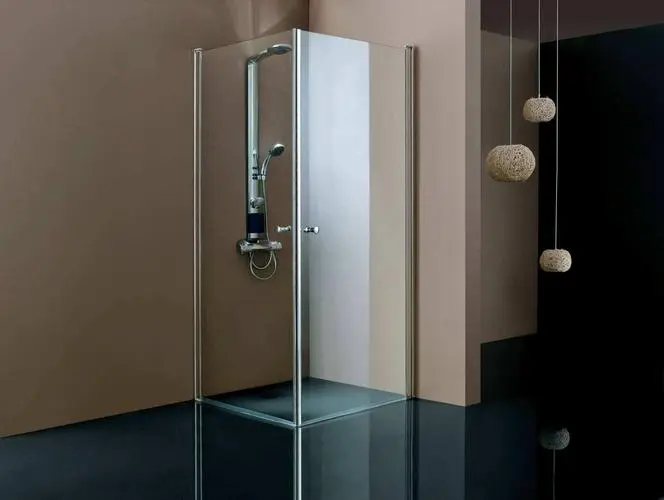
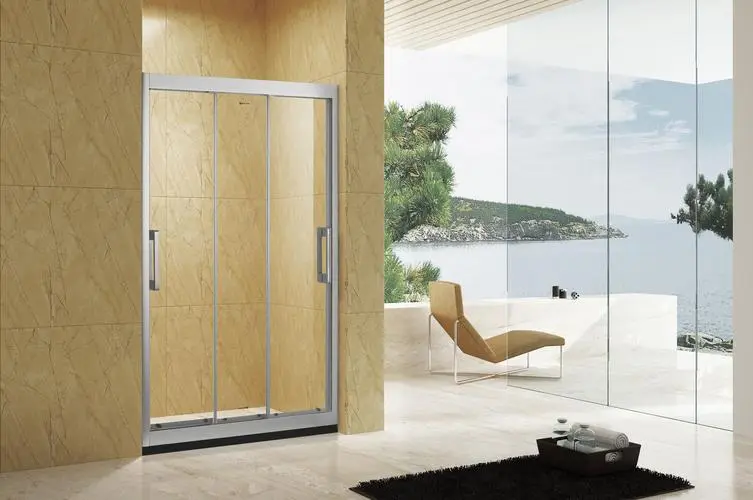
Shower inserts, also known as shower enclosures, are prefabricated units often consisting of a shower pan and walls. These units can be quickly installed into the existing space in your bathroom. They provide a faster, often cheaper, and more convenient alternative to traditional tiled showers.
A significant advantage of shower inserts is their versatility. They come in a variety of designs and materials, allowing homeowners to choose an option that best suits their aesthetic preferences and functional needs. From simple, minimalistic styles to intricate designs, there is a shower insert for everyone.
A commonly asked question is about the difference between shower inserts and tiled showers. While both serve the same function, they vary significantly in their installation process and overall cost. Tiled showers are custom-built and typically cost more in terms of both material and labor. On the other hand, shower inserts are prefabricated units that can be installed in a day or two, leading to lesser labor costs.
Shower inserts are not only cost-effective but are also known for their durability. The materials used in their construction are designed to withstand moisture and temperature variations, contributing to their longevity. They are also relatively easier to clean and maintain than tiled showers.
There are also several types of shower inserts, including one-piece units, multi-piece units, and custom units. One-piece units are the easiest to install but may require significant space to maneuver them into place. Multi-piece units are a bit more complicated to install but offer more flexibility, especially in smaller bathrooms. Custom units are designed to fit specific dimensions and layouts and can cater to unique bathroom designs.
While shower inserts are generally easy to install, it’s essential to ensure the bathroom’s existing plumbing aligns with the insert. If not, you might need to reroute the plumbing, which could add to the overall cost.
The choice between a shower insert and a tiled shower ultimately depends on several factors, such as your budget, aesthetic preferences, and practical needs.
One of the popular types of shower inserts are the walk-in shower inserts. They offer a luxurious, spacious, and convenient showering experience. More on that in the following sections.
Walk-in shower inserts are a specific type of shower enclosure that allows users to simply walk in, without the need for a door. Walk-in shower inserts typically have a larger showering space, offering a sense of luxury and comfort.
These shower inserts are particularly suitable for those seeking an open, spacious shower area. They provide a seamless transition from the bathroom to the shower area, making the bathroom appear larger. This feature has made walk-in shower inserts a popular choice in modern bathroom designs.
Another advantage of walk-in shower inserts is their accessibility. The lack of a step or threshold to enter the shower makes them an excellent option for individuals with mobility issues. They also minimize the risk of tripping, making them safer for children and the elderly.
One factor to consider while installing a walk-in shower insert is the water containment. Since there’s no door to keep the water confined, it’s crucial to ensure the shower is designed to prevent water from splashing out into the rest of the bathroom. This can be achieved through strategic placement of the showerhead and using shower screens.
The installation of walk-in shower inserts may require more space compared to other types of shower inserts. Therefore, they might not be the best option for small bathrooms unless designed carefully.
Walk-in shower inserts are available in a variety of materials, designs, and finishes, allowing you to choose one that best matches your bathroom décor. You can find some great options at Crown Shower.
The UK market boasts several renowned brands offering a diverse range of shower inserts. Wickes, B&Q, and Screwfix are among the most popular ones, each having its unique selling points.
Wickes is a reputable brand known for its high-quality shower enclosures. They offer a wide range of options, including 3-sided shower enclosures, quadrant shower enclosures, and square shower enclosures. Their products are characterized by robust construction and stylish designs. Check out their 3-sided shower enclosure options here.
B&Q is another popular brand that offers an array of shower inserts. Known for their affordability and durability, B&Q shower inserts cater to a broad spectrum of customer needs. They also offer cubicles and trays that can fit into different bathroom layouts.
Screwfix stands out with their range of practical and innovative shower enclosures. Whether you’re looking for a simple, functional design or a more luxurious option, Screwfix has it all.
It’s important to note that the best brand for you would depend on your specific needs, preferences, and budget. It’s always a good idea to compare different brands, check customer reviews, and consult professionals before making a decision.
When choosing a shower insert, you need to consider several factors to ensure it meets your needs and fits well within your bathroom space. Some of the key elements to look out for are:
One great place to start your search is at B&Q, where they offer a variety of shower inserts, including cubicles and trays.
The installation of shower inserts is relatively straightforward, but it does require some planning and preparation. Here’s a general overview of the process:
Remember, while these are general steps, the installation process may vary based on the type and brand of the shower insert. Always refer to the manufacturer’s instructions for best results. For more detailed information, visit Crown Shower’s guide on shower enclosure installation.
Freestanding shower inserts are standalone
units that can be placed anywhere in the bathroom. Unlike other types, they don’t need to be installed against a wall. This feature offers a lot of flexibility in terms of bathroom layout and design.
Freestanding shower inserts can be a focal point in your bathroom, adding a touch of luxury and elegance. They are also easier to install as they do not require any extensive construction or modifications to your bathroom.
However, freestanding shower inserts require more space compared to other types. Therefore, they are more suitable for larger bathrooms.
Like other types of shower inserts, freestanding ones come in a variety of designs, materials, and finishes. So, whether you’re aiming for a modern, minimalist look or a more classic, traditional style, there’s likely a freestanding shower insert for you.
While shower inserts are a great choice for many homeowners, they might not be the right fit for everyone. If you’re looking for alternatives, tiled showers and wet rooms are two popular options.
Tiled showers are customizable, allowing you to choose the tile design, color, and layout. They are typically more expensive and require more maintenance compared to shower inserts. However, they can add a touch of luxury and personal style to your bathroom.
Wet rooms, on the other hand, are completely open-concept, with the entire room waterproofed. This design provides a sleek, modern aesthetic and is particularly suited to small bathrooms as it can make the space feel larger.
Another alternative is using shower screens in combination with a shower tray. This option provides more flexibility and can be more cost-effective compared to shower inserts. Check out some great options at Crown Shower’s shower screen selection.
Shower inserts can be purchased from various outlets including home improvement stores, specialized bathroom stores, and online retailers. Some popular UK-based retailers include B&Q, Wickes, and Screwfix.
Each retailer offers a range of shower inserts from different brands, in varying sizes, styles, and prices. It’s a good idea to compare options from multiple outlets to get the best deal.
Online shopping is an excellent option for those who prefer a hassle-free shopping experience. However, it’s crucial to verify the product dimensions, check customer reviews, and understand the return policy when shopping online.
Remember, while price is an important factor, it’s equally important to prioritize quality, durability, and after-sales service when choosing a shower insert. One such online retailer offering quality shower inserts and excellent customer service is Crown Shower.
Shower inserts are a fantastic investment for several reasons. They are cost-effective, durable, easy to clean, and relatively easy to install. Additionally, they come in various designs and styles, allowing you to enhance the aesthetic appeal of your bathroom.
Shower inserts also add value to your home, which can be beneficial if you plan to sell your property in the future. According to some real estate experts, bathroom renovations, including new shower installations, offer a significant return on investment.
However, as with any investment, it’s crucial to consider your specific needs, budget, and long-term plans before making a decision. Whether you prefer a simple, practical shower enclosure or a luxurious, spacious walk-in shower insert, you’re bound to find a shower insert that suits your needs and adds value to your home.
That concludes our comprehensive guide on shower inserts. Whether you’re renovating your existing bathroom or building a new one, we hope this guide has provided useful insights to help you make an informed decision.
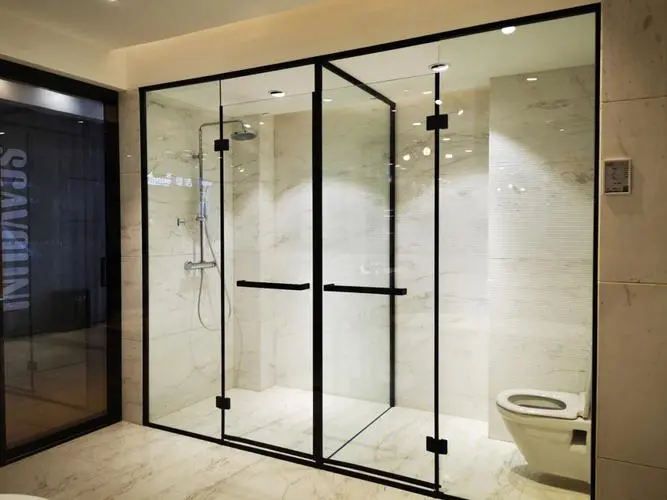
When planning a bathroom renovation, one of the key considerations is the cost of shower inserts. Shower inserts, also known as shower surrounds or shower stalls, are pre-fabricated units that can be installed in your bathroom. They come in a variety of materials, each with its own cost implications. In this article, we will explore the different factors that influence the price of shower inserts and provide you with a comprehensive guide to understanding the costs involved.
Material: The material used in the shower insert is one of the primary factors that determine its cost. Different materials have different price ranges and offer varying levels of durability and aesthetic appeal.
Size: The size of the shower insert also affects its cost. Larger inserts require more materials and labor, making them more expensive than smaller ones.
Customization: If you require customizations such as unique shapes or designs, the cost of the shower insert will increase. Customized inserts require additional labor and materials.
To give you a better understanding of the cost range for shower inserts, here is a breakdown based on different types:
| Type of Shower Insert | Price Range |
|---|---|
| Acrylic | $300 – $1000 |
| Fiberglass | $400 – $2000 |
| Cultured Marble | $800 – $3000 |
Please note that these prices are approximate and can vary depending on your location, the specific design, and the materials used. It’s essential to get quotes from local contractors to get a more accurate estimate for your specific needs.
Acrylic Shower Inserts: These are the most common prefab units. They are durable, easy to clean, and come in a variety of designs. The cost for these units ranges between $300 and $1000.
Fiberglass Shower Inserts: These inserts are lightweight and durable. They are also easy to install, making them a popular choice for DIY enthusiasts. The cost for these units ranges from $400 to $2000.
Cultured Marble Shower Inserts: These offer a more luxurious look. They are made by casting polymer resin into molds to create a product that looks like natural stone. The cost for these units ranges between $800 and $3000.
Shower inserts can be a cost-effective and convenient option for bathroom renovations. Whether you choose acrylic, fiberglass, or cultured marble, it’s important to consider factors such as material, size, and customization when determining the cost. By understanding these factors, you can make an informed decision and find the perfect shower insert that fits your budget and style.
Remember to consult with local contractors and compare quotes to get the most accurate estimate for your specific needs. With the right shower insert, you can transform your bathroom into a functional and beautiful space.
Shower inserts, also known as shower stalls, are an integral part of modern bathrooms, providing a convenient and aesthetically pleasing showering area. This guide is designed to answer the most pressing questions consumers have about shower inserts, covering various aspects from installation to maintenance, and including related terms and products such as shower enclosures, walk-in showers, shower doors, and shower heads.
When considering a bathroom renovation or upgrade, homeowners often evaluate the benefits of installing a shower insert versus opting for traditional tiling. Shower inserts offer a variety of advantages:
Selecting the right size and style of a shower insert is crucial for both functionality and aesthetics in a bathroom:
Tables can be helpful for comparing different models:
| Model | Dimensions | Door Type | Features |
|---|---|---|---|
| Model A | 60x32x72 | Sliding | Built-in Seat |
| Model B | 48x36x72 | Pivoting | Shelving Unit |
| Model C | 36x36x78 | Hinged | Minimalist Design |
Installation of a shower insert requires careful consideration of several factors to ensure a smooth process and functional outcome:
A checklist can assist in ensuring all steps are completed:
Shower inserts can be somewhat customized to fit various needs and preferences. Customization options typically include:
Maintaining a shower insert involves regular cleaning and inspection:
While shower inserts are convenient, they may have some drawbacks:
The cost comparison between shower inserts and custom-tiled showers depends on several factors:
A basic cost comparison table:
| Cost Factor | Shower Insert | Custom-Tiled Shower |
|---|---|---|
| Materials | $$ | $$$ |
| Labor | $ | $$$ |
| Installation Time | Shorter | Longer |
Shower inserts are often made from materials such as:
Durability is affected by:
Eco-friendly options for shower inserts focus on:
Emerging trends in shower insert design include:
By examining these frequently asked questions and their detailed answers, consumers can make well-informed decisions about shower inserts that suit their needs and preferences.To follow the instructions as per your request, let’s go step by step. First, we need to generate 10 of the most asked questions regarding shower inserts.
Shower inserts, also known as prefabricated shower stalls, are pre-made shower units that can be installed in a bathroom to provide a functional and aesthetically pleasing bathing space. On the other hand, custom-tiled showers are built on-site by professionals who lay tiles over a waterproofed area to create a customized showering space. The key differences between the two options include:
Installation: Shower inserts can be installed relatively quickly as they are pre-built units, while custom-tiled showers require several days or even weeks to install due to the extensive labor involved in tiling and grouting.
Customization: Tiled showers offer more customization options in terms of size, shape, and design. Shower inserts come in standard sizes and shapes, with limited customization.
Cost: Generally, shower inserts are more cost-effective, both in terms of the product and installation labor. Custom-tiled showers can be significantly more expensive.
Maintenance: Shower inserts are easier to clean and maintain due to their seamless design, while tiled showers may require more effort to prevent mold and mildew, particularly in the grout lines.
Durability: While both options are durable, the materials used in shower inserts, such as acrylic or fiberglass, can sometimes be less robust than the ceramic or porcelain tiles used in custom showers.
Repair: Repairs on a shower insert may involve replacing the entire unit, whereas a tiled shower can often be repaired by replacing individual tiles.
Appearance: Tiled showers can provide a higher-end look and can be tailored to match the exact style and decor of a bathroom, while inserts are more limited in finish and style.
Resale Value: Custom-tiled showers can add more value to a home, often seen as a premium feature by potential buyers.
Waterproofing: Tiled showers require a careful waterproofing process to prevent leaks, while shower inserts are inherently waterproof.
Accessibility: Many shower insert models are designed for accessibility, offering features like low thresholds and built-in seats, which might be more complex and costly to incorporate into a tiled shower design.
In choosing between a shower insert and a custom-tiled shower, homeowners should consider their budget, design preference, and maintenance willingness, as well as how the choice will affect the home’s value.
To choose the appropriate shower insert for your bathroom, you need to assess the following:
Bathroom Layout: Measure the space where the insert will go. You need to know the dimensions you’re working with to select an insert that fits.
Style and Design: Decide on the aesthetic you’re aiming for. Do you want a modern, sleek look or something more traditional? Shower inserts come in a variety of designs and finishes, including those that mimic tile.
Functionality: Think about the features that are important to you. Do you need built-in shelves, benches, or grab bars? What type of shower door do you prefer – sliding, pivoting, or a curtain?
Material: Shower inserts are typically made from acrylic or fiberglass. Consider which material suits your needs in terms of durability and maintenance.
Installation: Are you planning a DIY installation, or will you hire a professional? Some inserts are easier to install than others.
Plumbing Considerations: Check the compatibility of the shower insert with your existing plumbing. You may need to move pipes, which can add to the cost.
Budget: Set a realistic budget for the purchase and installation of the shower insert. Be sure to account for all potential expenses.
Longevity: Look for high-quality inserts that promise durability and longevity. Read reviews and check warranties.
Maintenance: Choose an insert that is easy to clean and maintain. Some materials and finishes are more resistant to stains and mildew.
Resale Value: Consider how your choice will impact the resale value of your home. Sometimes investing a bit more in a higher-end insert can pay off in the long run.
When equipped with this information, you can make an informed decision and select a shower insert that suits your needs, preferences, and lifestyle.
For a successful shower insert installation, pay attention to the following elements:
Preparation: Ensure the area where you will install the shower insert is clean, level, and structurally sound. This may involve removing old fixtures and repairing any damage to walls or flooring.
Measurements: Double-check the measurements of both the bathroom space and the shower insert before installation to ensure a proper fit.
Plumbing Alignment: The existing plumbing must align with the new insert’s design, particularly the drain and water supply lines.
Support: Check that there is adequate support behind the shower insert, especially if you plan to install heavy glass doors.
Waterproofing: Even though inserts are designed to be watertight, make sure there’s no room for water to escape, especially around the insert’s edges.
Sealant: Use a high-quality sealant around the insert, particularly where it meets the bathroom walls and floor.
Ventilation: Proper ventilation is crucial to prevent mold and mildew. Ensure your bathroom fan is in good working order or consider upgrading it if necessary.
Tools and Materials: Gather all the necessary tools and materials before beginning the installation. This will save time and help avoid interruptions.
Instructions: Follow the manufacturer’s installation instructions meticulously to avoid any issues that could arise from improper installation.
Inspection: Once the installation is complete, inspect everything thoroughly. Make sure all fixtures are secure, and the doors operate smoothly, and test for any
leaks.
Professional installation is recommended for those who are not confident in their DIY skills, as a poorly installed shower insert can lead to significant problems down the road.
This article has begun answering the most asked questions about shower inserts, covering the differences from tiled showers, selection criteria, and installation considerations. For further details on maintenance, customization, costs, materials, eco-friendliness, and the latest trends, additional research and expert advice can provide homeowners with a comprehensive understanding, ensuring they make the best choice for their bathroom renovation project.
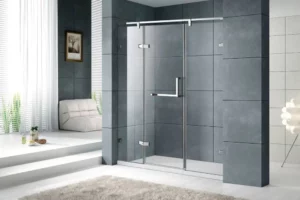
Crafting a flawless shower enclosure combines smart planning, durable materials, and precise execution. In 2025,
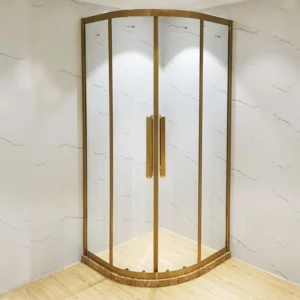
The African commercial shower market presents unprecedented growth opportunities. Our Shower Enclosure Distributor Network connects

Introduction The African shower enclosure market continues to expand rapidly in 2025. Commercial construction growth
